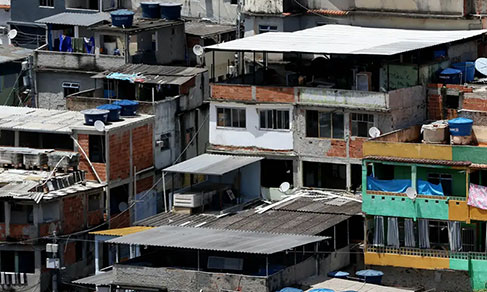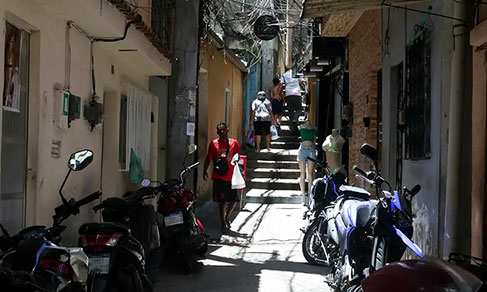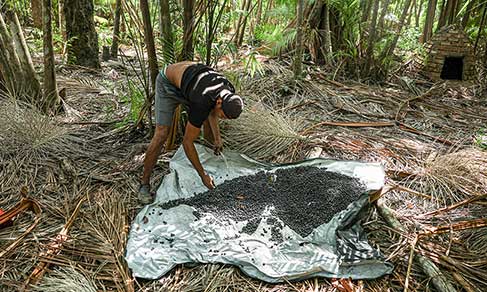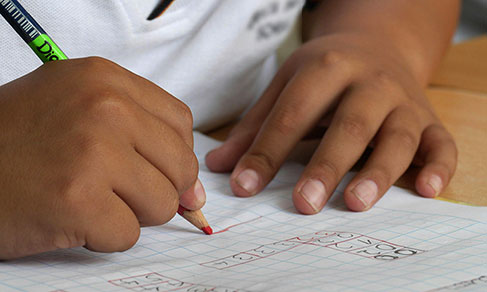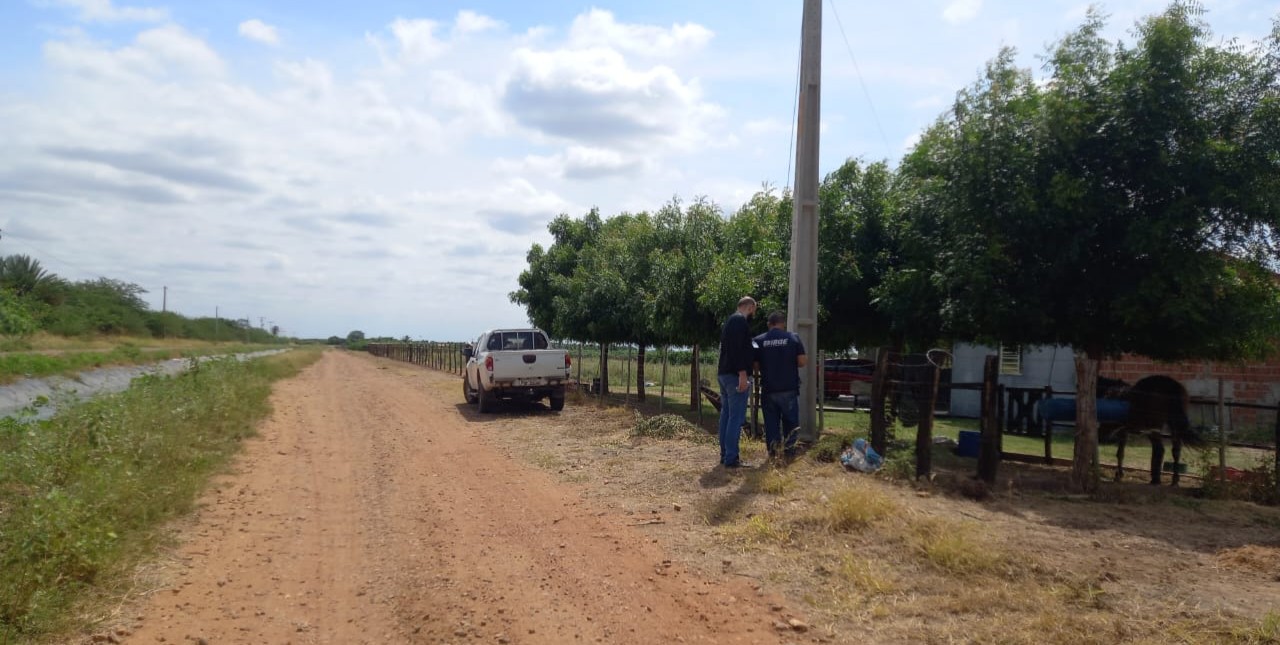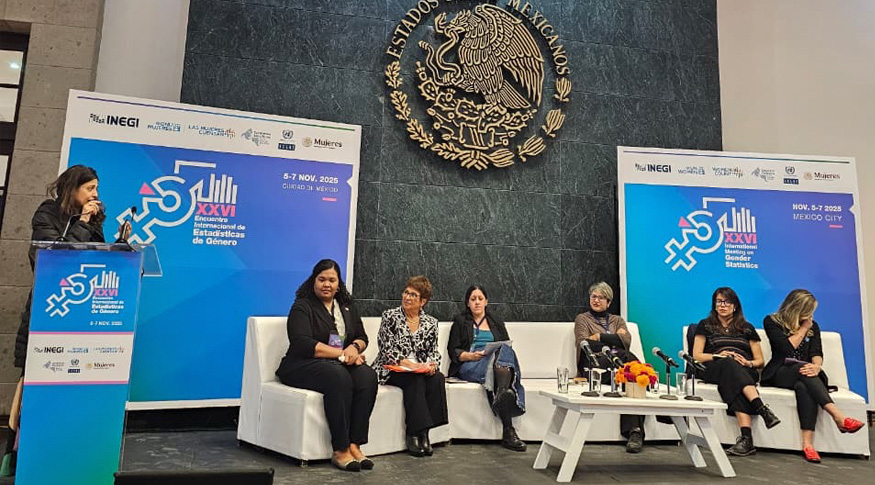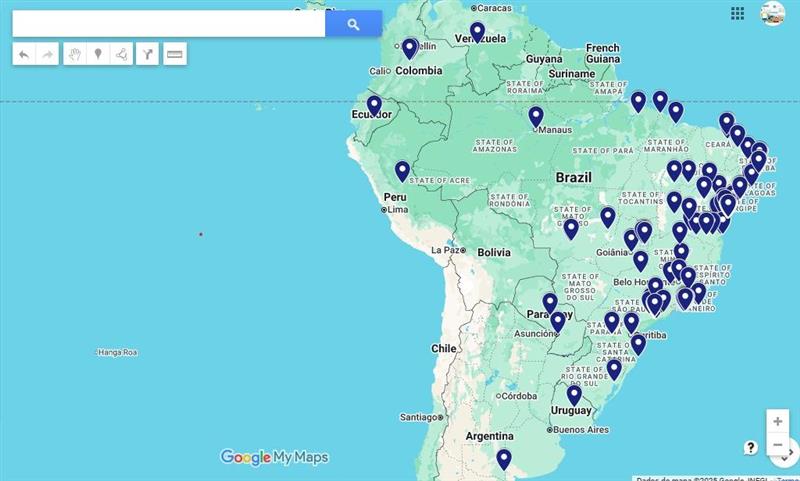Population Projection
Brazil's population will stop growing in 2041
August 22, 2024 10h00 AM | Last Updated: August 23, 2024 08h12 PM
Highlights
- According to the IBGE Population Projections, after reaching its maximum (220,425,299 inhabitants) in 2041, the country's population will decrease, reaching 199,228,708 inhabitants in 2070.
- From 2000 to 2023, the country's fertility rate fell from 2.32 to 1.57 children per woman. Among the states, the highest rate was in Roraima (2.26) and the lowest, in Rio de Janeiro (1.39). The average age at which women had children was 25.3 years old in 2000, rose to 27.7 years old in 2020 and is expected to reach 31.3 years old in 2070.
- The number of births per year fell from 3.6 million in 2000 to 2.6 million in 2022, and is expected to fall to 1.5 million in 2070.
- From 2000 to 2023, the infant mortality rate fell from 28.1 to 12.5 deaths per thousand live births. This indicator will fall to 5.8 in 2070.
- Life expectancy at birth rose from 71.1 years in 2000 to 76.4 years in 2023, and is expected to reach 83.9 years in 2070.
- From 2000 to 2023, the proportion of elderly persons (60 years and over) in the Brazilian population almost doubled, rising from 8.7% to 15.6%. In 2070, approximately 37.8% of the country's inhabitants will be aged 60 and over.
- The average age of the population was 28.3 years in 2000, rose to 35.5 years in 2023 and is expected to reach 48.4 years in 2070.
- Population Projections guide public policies of the three spheres of government and allow the IBGE to update the samples of its household surveys.
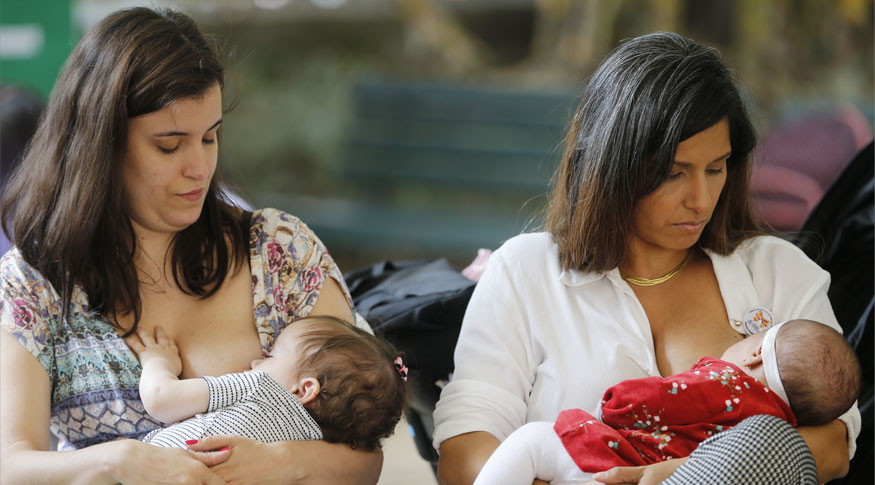
The first IBGE Population Projections with data from the 2022 Population Census, released today (22), estimate that the country's population will stop growing in 2041, when it will reach 220,425,299 inhabitants. This demographic study also shows that, from 2000 to 2023, the fertility rate fell from 2.32 to 1.57 children per woman, and should fall to 1.44 in 2040, when it reaches its lowest point. The average age of the Brazilian population reached 35.5 years in 2023 and is expected to rise to 48.4 years in 2070.
IBGE's Population Projections use data from various sources, such as the three most recent population censuses (2010, 2010 and 2022), the time series of Vital Statistics (started in 1974), the System of Mortality Information (SIM) and the System of Live Birth Information (SINASC), both from the Ministry of Health, among others. The projections allow the monitoring of the evolution of the country's demographic patterns.
They also serve as a parameter for public policies in the three spheres of government and allow the IBGE to update the samples of its household surveys, such as the Continuous PNAD, the National Survey of Health (PNS) and the Consumer Expenditure Survey (POF).
For Izabel Marri, manager of Demographic Studies and Analysis at the IBGE, “the main importance of the Projections is to inform the country's population each year, since population censuses only occur every ten years. This information, by age and sex, is essential for developing public policies aimed at children, the elderly or the workforce. In addition, this data is the basis for calculating the Municipal Revenue Sharing Fund (FPM) and the State Revenue Sharing Fund (FPE)”.
Country's fertility rate in 2023 drops to 1.57 children per woman
According to the 2024 Population Projections, the country's fertility rate was 2.32 children per woman in 2000, falling to 1.75 children per woman in 2010 and reaching 1.57 in 2023. In the coming years, this rate is expected to fall to 1.47 in 2030 and reach its lowest point in 2041, 1.44 children per woman.
However, from 2050 onwards, the Projections indicate that the rate will increase slightly, reaching 1.45 in 2050, 1.47 in 2060 and 1.50 in 2070. This indicator has been decreasing as a consequence of a series of changes that have taken place in Brazilian society since the mid-20th century.
Ms. Marri highlights that the reduction in the fertility rate “has been going on since the 1960s. Several factors contribute to this, such as urbanization, the entry of women into the job market and the increase in female education, in addition to the popularization of the contraceptive pill. As a result, fertility rates gradually fell from an average of more than six children per woman to current levels”.
The regions with the highest fertility rates in 2023 were the North (1.83) and Central-West (1.71), while the Northeast (1.56), South (1.56) and Southeast (1.48) had the lowest rates. Among the states, the highest fertility rate was in Roraima (2.26) and the lowest was in Rio de Janeiro (1.39).
Women's average age for having children is rising
Another piece of information from the Population Projections is the average age of fertility, that is, the average age at which women have children, which was 25.3 years old in 2000, having risen to 27.7 years old in 2020 and being expected to reach 31.3 years old in 2070.
“We have observed, in Brazil and in several countries, a delay in motherhood, that is, women are deciding to have their children later. Indirectly, this also contributes to the reduction in the total number of births”, observed the IBGE demographer.
Drop in the number of births is sharper in the Northeast
With the reduction in fertility, the number of births occurred each year also decreased throughout the period analyzed by the Population Projections: from 3,572,865 births in 2000, it fell to 2,947,296 in 2010 and then to 2,574,542 in 2022. For 2070, the Population Projections show 1,488,161 births.
The IBGE demographer highlights: “the regions that showed the greatest reduction in the number of births over the last decade were the North and, mainly, the Northeast”. From 2000 to 2023, the number of births in the Northeast fell from 1.1 million to 705.6 thousand. In the same period, in the North, this indicator fell from 377 thousand to 285 thousand.
Ms. Marri also draws attention to the reduction in births in the country in recent years. “We still don’t know what part of this reduction was expected and what was the effect of the pandemic, especially from 2021 onwards. We are waiting to see whether the data in the coming years will show a recovery in the number of births to pre-pandemic levels or not.”
In 2041, Brazil’s population will reach its peak: 220.4 million persons
As a consequence of these indicators, the country’s population growth will slow down until 2041, when the population will reach its maximum value: 220,425,299 inhabitants. From this year onwards, the country’s population is expected to decrease, reaching 199,228,708 inhabitants in 2070.
Ms. Marri explains that this decline will be quite uneven regionally. “Migration between states is a very important factor in population dynamics. Some states are the origin and others are the destination of these migrants. This will mean that each state will have its population inflection at a different time.”
Rio Grande do Sul and Alagoas should be the first to reduce their population, as early as 2027, with Rio de Janeiro soon to follow, in 2028. On the other hand, Mato Grosso should be the last state to have this inflection, sometime after 2070 (the cutoff year for the current Population Projections). Santa Catarina and Roraima should start to reduce their population in 2064.
Infant mortality will fall to 5.8 deaths per thousand in 2070
The Population Projections also analyze the country's mortality patterns, allowing us to see that it has been decreasing in the younger age groups.
The infant mortality rate, which accounts for the mortality of children under one year of age, fell from 28.1 deaths per thousand live births in 2000 to 12.5 deaths per thousand in 2023. According to the IBGE Population Projections, this rate will fall to 5.8 in 2070. “This is a significant reduction in this indicator, which reflects the health conditions of the most vulnerable age group in the population,” highlights the demographer.
Life expectancy of those born in 2023 is 76.4 years
In the country, life expectancy at birth rose from 71.1 years in 2000 to 76.4 years in 2023. Among men, this indicator went from 67.3 years to 73.1 years in the period, and among women, from 75.1 years to 79.7 years. For Ms. Marri, "the increase in this indicator has been observed for some time now, with gains in years of life at all ages, mainly due to advances in medicine”.
The demographer points out that “this is the first Population Projection to incorporate data from the pandemic, which caused a decline in the country's life expectancy, from 76.2 years in 2019 to 72.8 years in 2021. However, preliminary data for 2023 show life expectancy rising to 76.4 years. It seems that this indicator will continue to grow as it did before the pandemic”. Projections for 2070 indicate life expectancy of 83.9 years, 81.7 years for men and 86.1 years for women.
From 2000 to 2023, proportion of elderly persons in the population almost doubled
The IBGE Population Projections show that, from 2000 to 2023, the proportion of elderly persons (those aged 60 or over) in the Brazilian population almost doubled, rising from 8.7% to 15.6%. In absolute numbers, the total number of elderly persons increased from 15.2 million to 33.0 million in the period.
In 2070, approximately 37.8% of the country's residents will be aged 60 and over, which will correspond to 75.3 million elderly persons.
Another indicator that illustrates the change in the country's age pattern is the average age of the population, which was 28.3 years in 2000 and rose to 35.5 years in 2023. For 2070, the projected average age of the Brazilian population is 48.4 years.
“These averages vary greatly between states. Rio Grande do Sul has the highest average age (38.1 years), followed by Rio de Janeiro (37.5 years) and Minas Gerais (37.1 years). The youngest states are in the North Region: Amapá (29.3 years) and Roraima (28.7 years)”, concluded Izabel Marri.
More about the survey
The Population Projections: Brazil and Federation Units: 2024 Revision uses data from the 2022 Population Census for the first time, in addition to other sources, to calculate trends in the country's demographic structure, including fertility, life expectancy and population aging, for the period from 2000 to 2070. In addition to portraying population dynamics over time, it provides a complete study of the country's recent past fertility and mortality rates and prospects for the future. There is data by age and sex for Brazil and Federation Units.


